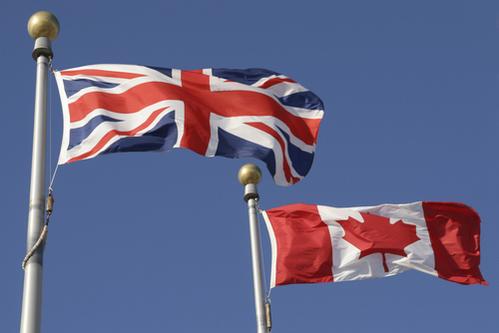In the August issue of Vanguard Magazine, MLI Managing Director Brian Lee Crowley discusses the importance of rethinking the Canada-U.S. border. Crowley says, “The time has come to create a joint committee of Congress and Parliament charged with the oversight of the Canada-U.S. relationship, holding hearings, issuing reports, and taking their newly acquired knowledge and relationships back to their respective bodies.” Read the entire article below:
Vanguard Magazine, Issue 5, August/September 2011
by Brian Lee Crowley
Just as generals are usually fighting the last war, officials on both sides of the Canada-U.S. border are usually trying to agree on how to administer a border that doesn’t exist anymore.
I am not saying the border has disappeared; only that “the border” evolves quickly and quietly in ways that government officials often grasp only dimly.
Take the notion that what holds up progress on relieving pressure at the border is the exclusive American focus on terrorism in the post-9/11 world. Canadians in this narrative are focused solely on the economic imperative of border opening, as befits a country that exports roughly half of everything its private sector makes, with four fifths of that going to the U.S.
But in the post-post-9/11 world things are more complicated. America has gone through a devastating recession and jobs have been slow to recover. The political consensus is that President Obama got heartily smacked by the electorate in the recent mid-terms for failing to focus on the economy. He is now trying to make up for lost time.
At the February meeting of Obama and Prime Minister Harper in Washington, negotiations were announced to reduce impediments to trade at the border. President Obama now understands that a congested border is hurting North American prosperity. Ford Motor Company estimates that border delays are adding $500 million in costs to North American produced cars that have to cross the border as many as six times at different stages of production. Japanese and European cars get imported once. The difference costs jobs on both sides of the border.
President Obama isn’t the only one who gets that. In recession-savaged Michigan, the new governor, Rick Snyder, campaigned aggressively to get a new bridge built between Detroit and Windsor on the grounds it would be good for U.S. workers. Not so many years ago then-U.S. Senator for New York, Hilary Clinton, was repeating the old canard that the 9/11 terrorists entered the U.S. from Canada. Today, New York Senator Chuck Schumer demands of senior U.S. border security bureaucrats in Senate committee hearings that they strive for pre-clearance of every truck crossing the Canada-U.S. border.
On the Canadian side you might think that we have focused on market opening and worried about security issues only to the extent we have been forced to by our need to placate Americans. You’d be wrong.
We’re spending $785 million arming customs agents at the same time that we let major border crossings like that at Lacolle, Quebec crumble. If you compared the U.S. crossing at Champlain, a few yards away, you’d think it was America that was preoccupied with border efficiency, not Canada.
Ninety-five percent of land border crossings into the U.S. from Canada are now equipped with radio frequency identification systems, allowing trusted travelers to enter the U.S. quickly and seamlessly. The Canadian proportion of lanes so equipped is feeble in comparison. The U.S. has established customs preclearance at nine Canadian airports, allowing the vast majority of Canadian air travelers to enter the U.S. as domestic passengers. The number of such Canadian facilities in the U.S.? Zero.
Does all this mean that the U.S. is now beating down Canada’s door asking to open the border? Of course not. Canada still has more at stake than the U.S. in removing impediments to trade, and the relative seniority of those heading the Canadian and U.S. teams in the current perimeter border negotiations are just one measure of the higher priority Canada sets on success.
Canada’s pleas to move freight from trusted shippers seamlessly through the border are meeting big resistance at the officials’ level. U.S. money politics are still allowing the owner of the Ambassador Bridge, Manny Maroun, to buy political opposition to another bridge and preserve his cash cow for a few more years.
But that just proves my point about generals fighting the last war. We are still stuck thinking that border-thinning negotiations are the preserve of administration officials on both sides. The time has come to talk, no longer about administrative incrementalism, but bold steps to give new momentum to our nascent North American institutions.
If, for example, American politicians are finally cluing in to the importance of an open border to their own workers, the time has come to create a joint committee of Congress and Parliament charged with oversight of the Canada-U.S. relationship, holding hearings, issuing reports, and taking their newly acquired knowledge and relationships back to their respective bodies. Give a human face to their relationship with Canada, and a context in which they actually are constrained to learn about it, and they will help to batter down the resistance of the backward-looking generals at the gate.
Brian Lee Crowley is managing director of the Macdonald-Laurier Institute, an independent non-partisan public policy think tank (www.macdonaldlaurier.ca).



